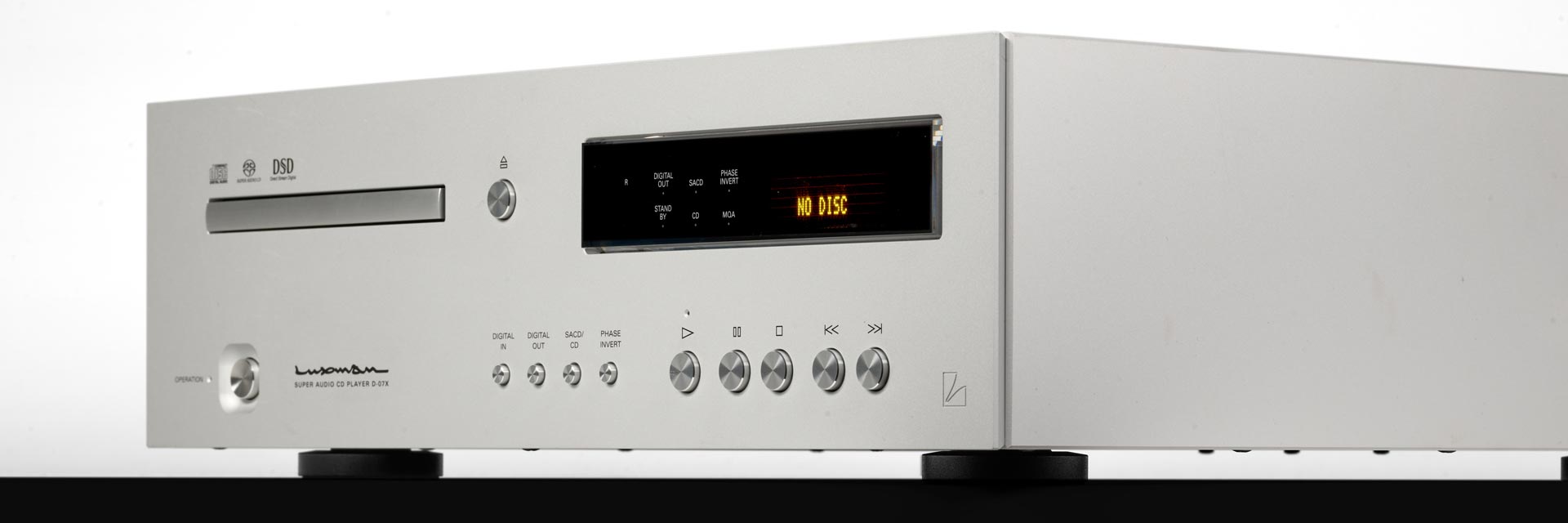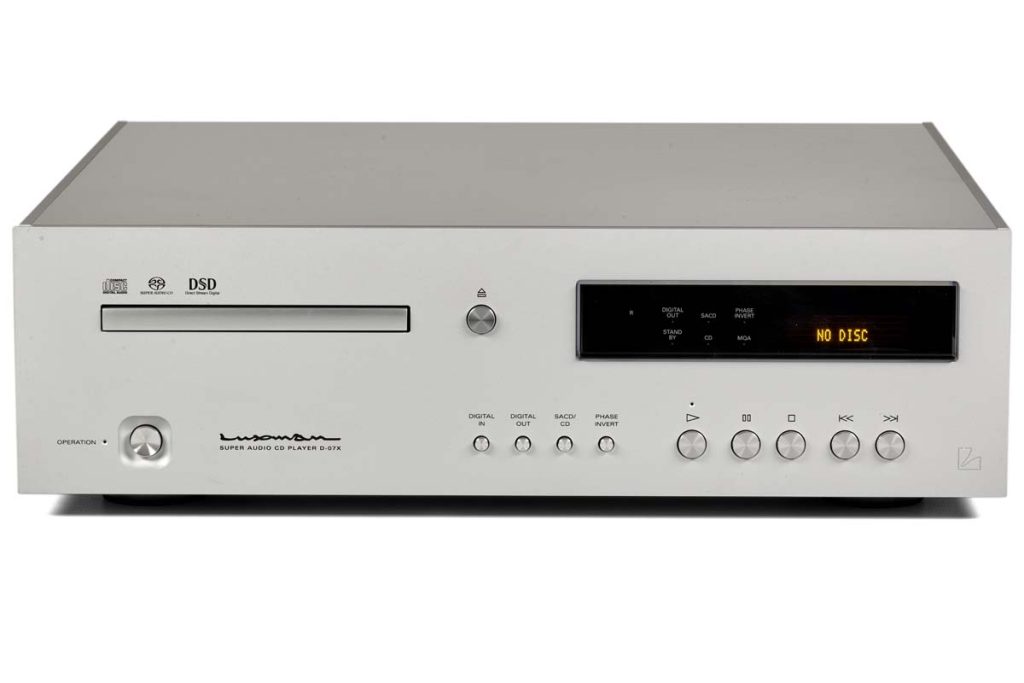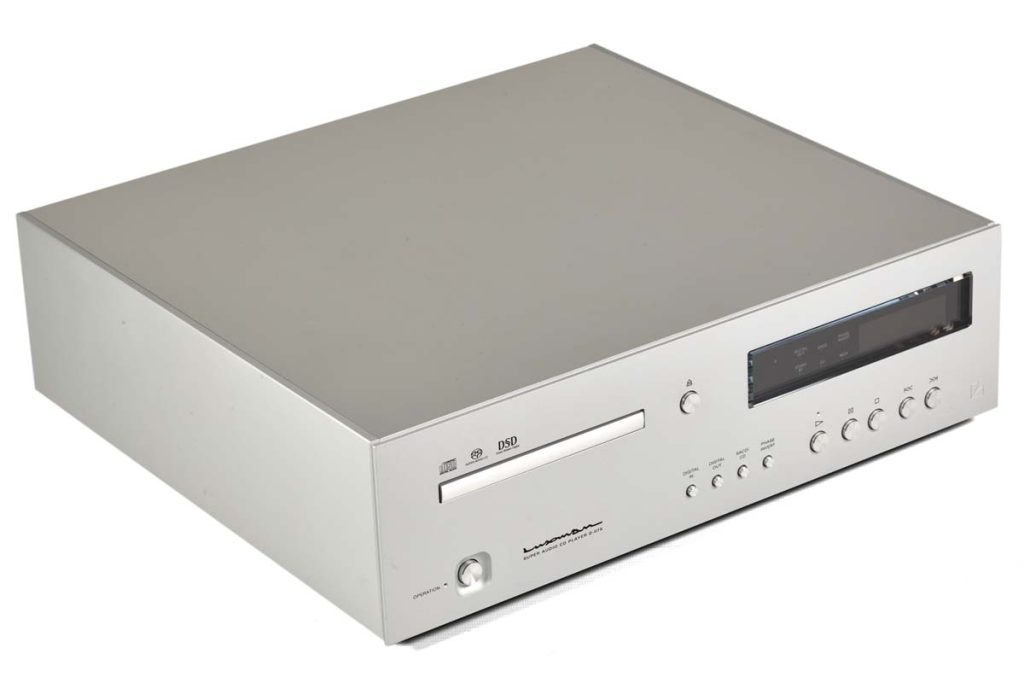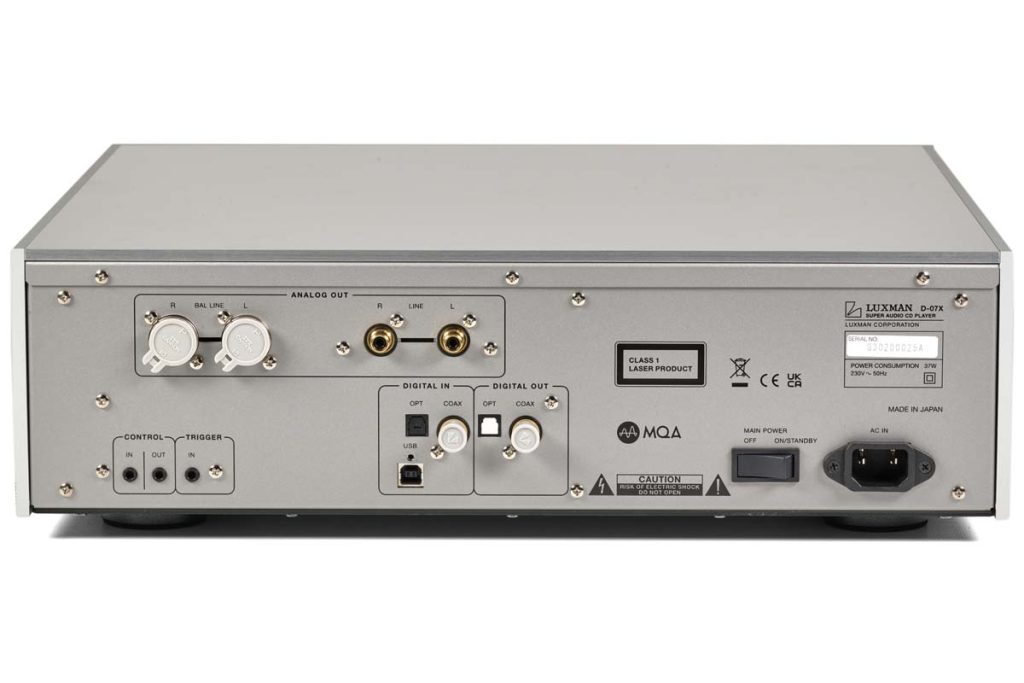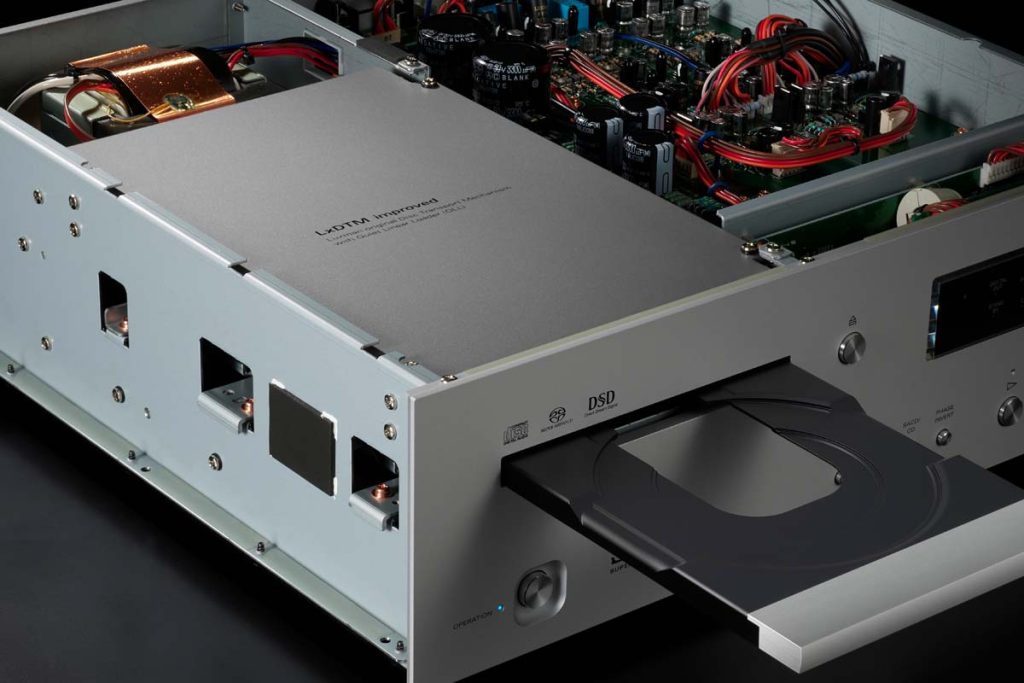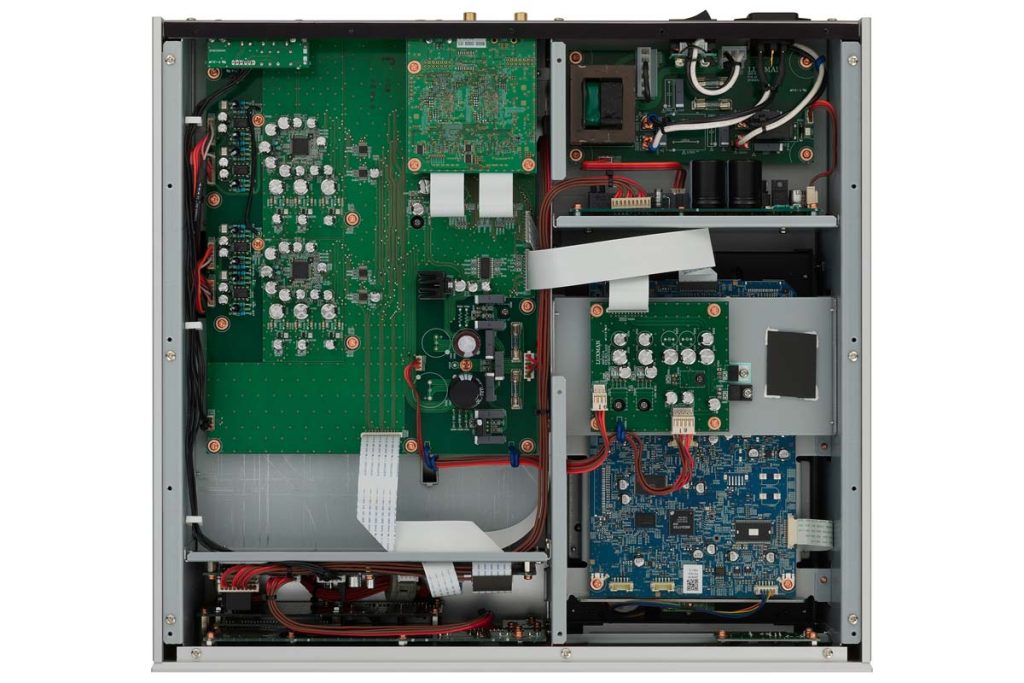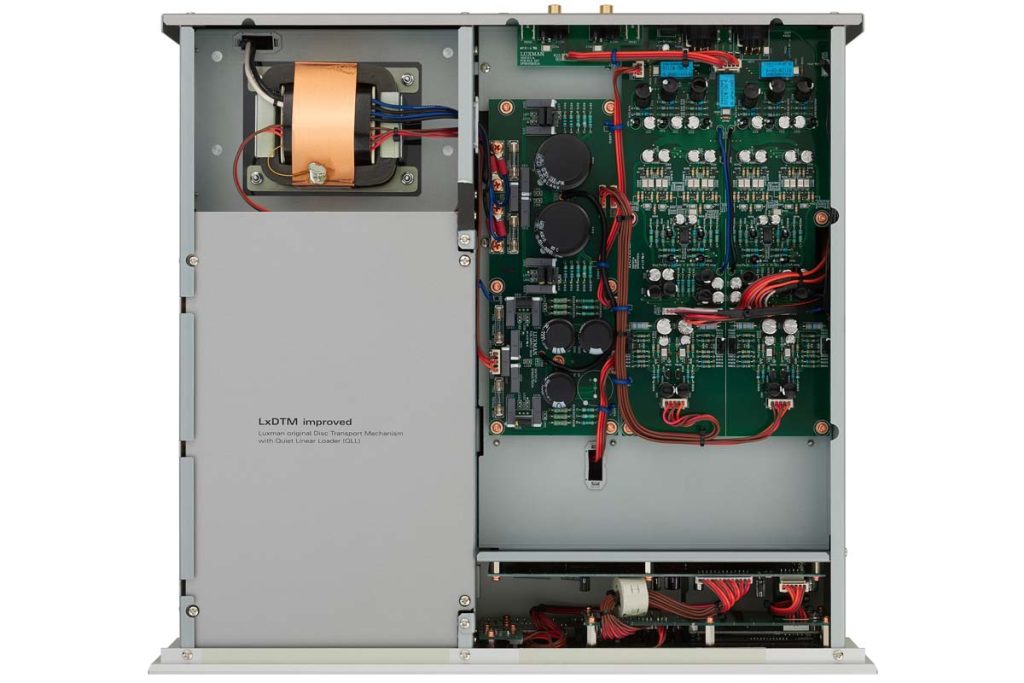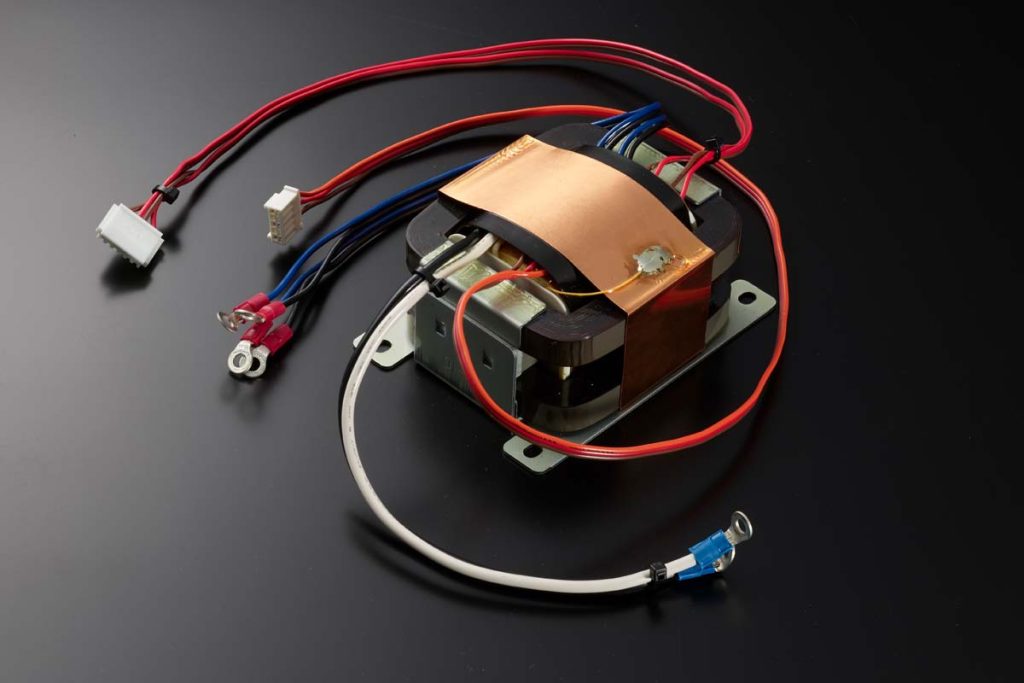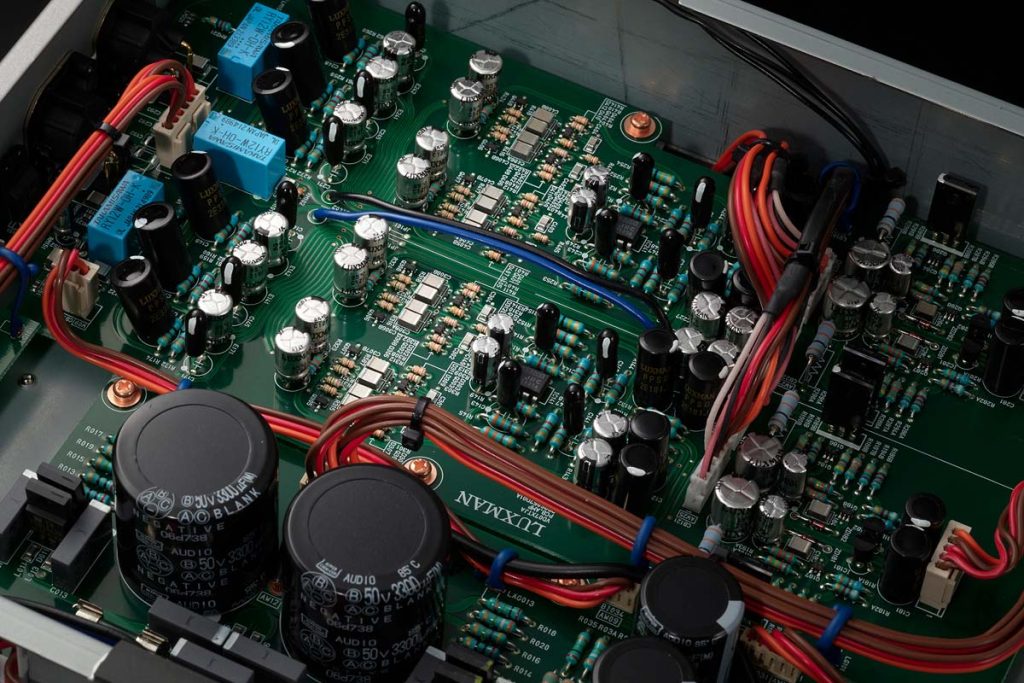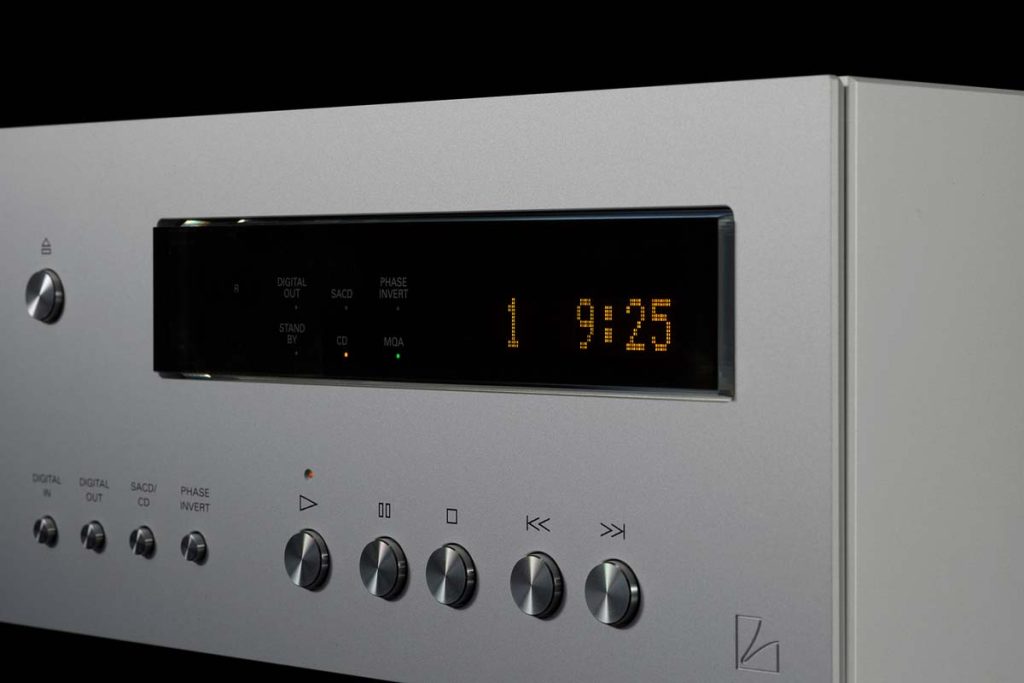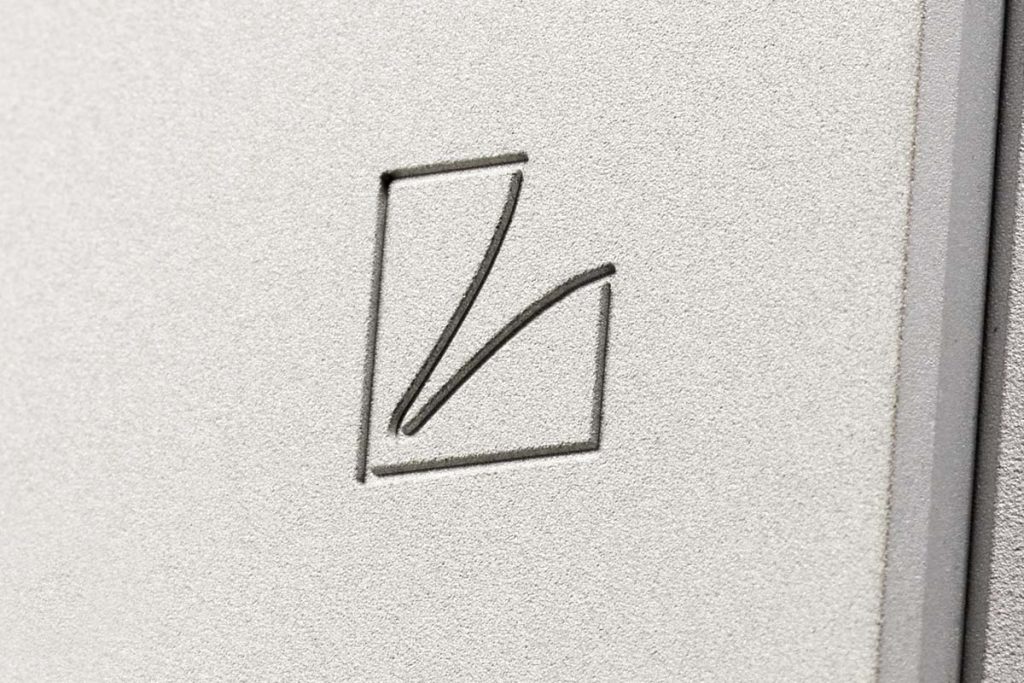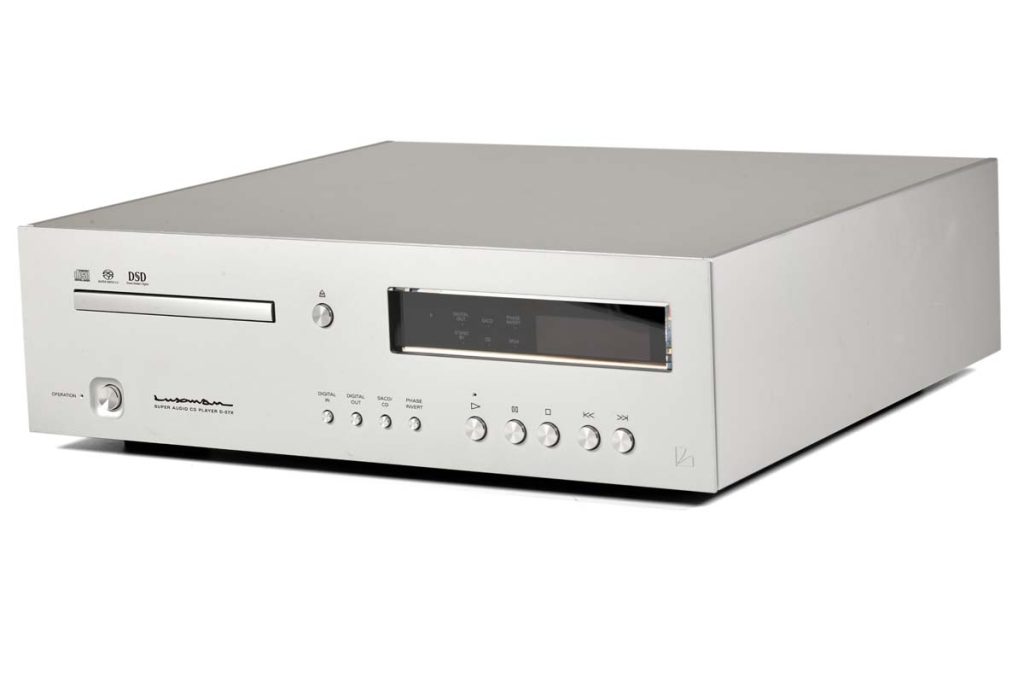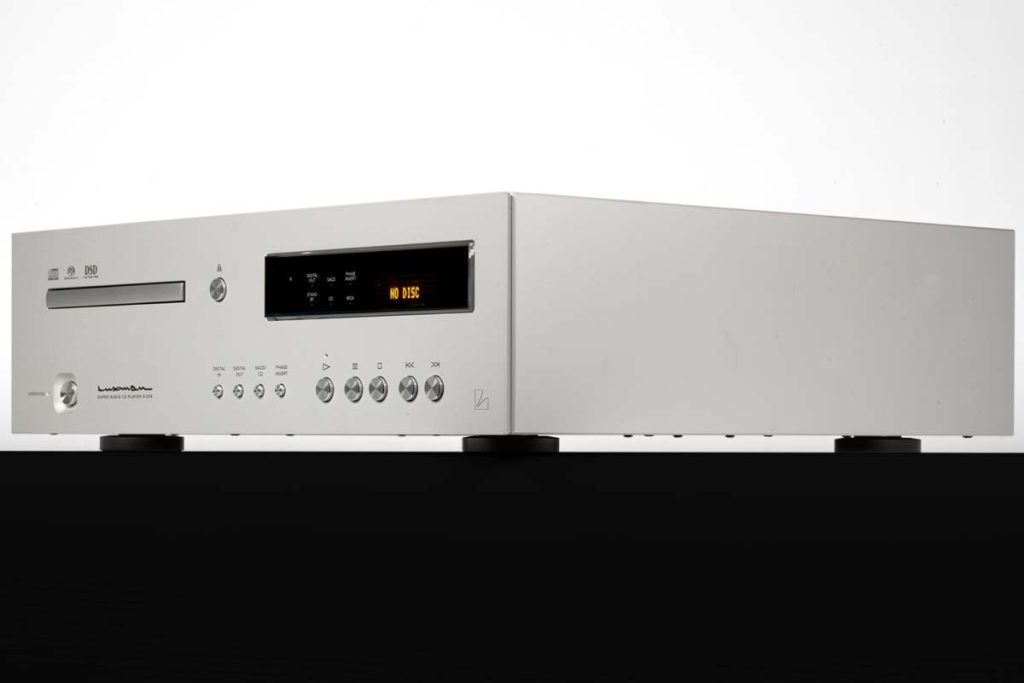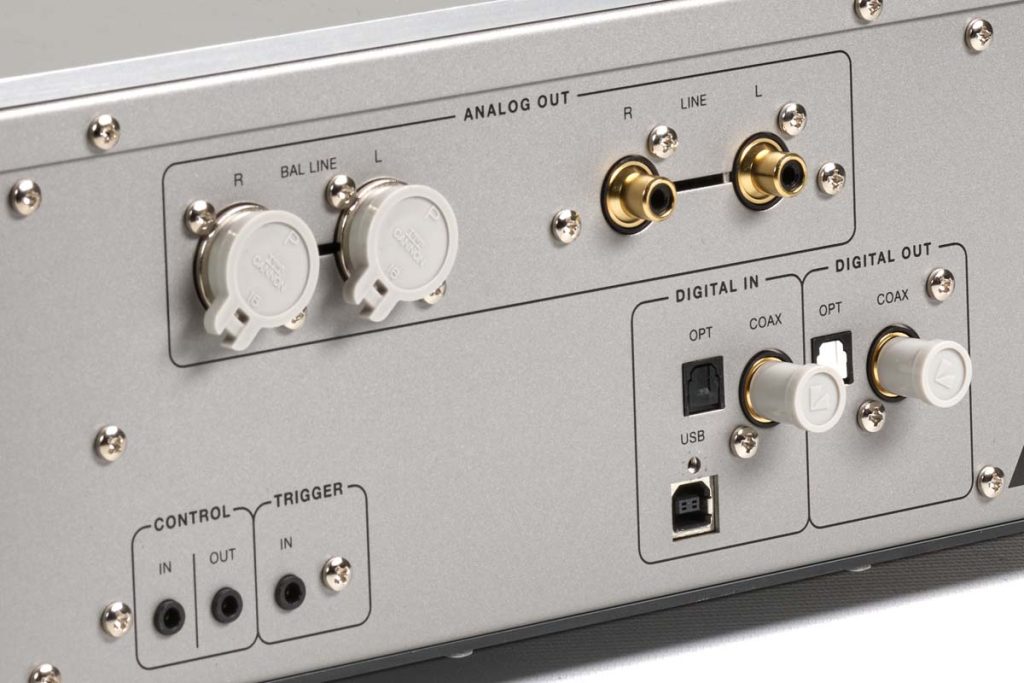It may look like an oversized CD player, but it’s actually an audiophile computing center: The Luxman D-07X marks a new class.
There are different interpretations of what luxury is. A modern interpretation suggests that you fall onto the most comfortable sofa, give your mobile device a few taps, and let the music flow freely. This is the minimalist approach: You don’t need many devices for it, and you don’t have to worry about them much after installation. On the other hand, you can also argue that true luxury lies in taking occasional trips to the shelf during a music evening, spilling some cognac while searching for that one CD that you must listen to now. This is the more extravagant interpretation because it requires more effort: You need a shelf at the very least. However, you select your music from a smaller pool with greater care, savor the brief pause during the read-in of the new recording, and most importantly, you don’t see if you’ve received a WhatsApp message during that time, as receiving text messages is one of the few things the Luxman D-07X is not designed to do.
The Luxman is, first and foremost, an SACD and CD player, and it looks the part. Additionally, it can act as a DAC and essentially play anything that’s not vinyl, and it does so at an excellent level. The new player is positioned between the already substantial D-03X and the state-of-the-art D-10X, which touches the limits of what’s possible in terms of pricing, at around 17 large bills. It becomes clear that the D-07X is not your typical CD player: The device arrives on a pallet via freight, weighs a hefty 17 kilograms, and with its 44 centimeters in width and 41 centimeters in depth, it stretches the boundaries of the usual HiFi dimensions.
The D-07X is undoubtedly a substantial colossus, but its visual presentation is elegant. It unmistakably exudes the presence of a high-end component – chassis, connectors, buttons: everything feels excellent and follows a clear design philosophy; all elements are of the highest quality, and nothing appears ostentatious. If it weren’t for its sheer size, you could consider the player’s classic design as a refined understatement. The front is characterized by absolute simplicity: Below the easily readable display in typical Luxman orange, you’ll find larger round buttons that provide essential functions like play, stop, and skip. More advanced functions, such as selecting digital inputs, choosing between CD and SACD, and phase inversion, can be accessed through smaller buttons next to them. The power switch, typical of Luxman, is nestled in a small recess.
It may sound somewhat exaggerated, but it’s an immense pleasure to operate the controls. First, one can expect high-quality tactile feedback from a device that costs nearly 12,000 euros, and the Luxman doesn’t disappoint in this regard. Second, you don’t need to open an app or deal with a user interface. It’s relaxing, refreshingly simple, and works perfectly even in dimly lit listening sessions.
I particularly enjoyed loading the tray of the drive. The aluminum die-cast drawer slides out smoothly, has no play, and receives the disc in a nearly ceremonial manner. And when the disc starts spinning, you hear: nothing – at least no mechanical noises. The Japanese manufacturer refers to this as an “LxDTM” mechanism, also used in the flagship D-10X. It involves a stable structure with side frames and a top plate attached to the side wall. Because this is executed with exquisite precision, there is absolutely no vibration – neither externally nor internally – as one would expect nowhere else. This not only ensures smooth operation but also aids the laser in its work. By the way, it was impossible to overwhelm the D-07X during disc loading, even with heavily scratched discs, causing it to skip.
The back panel is relatively busy, as the D-07X is expected to provide several input options. The USB connection supports both PCM and DSD, while the coaxial and optical inputs can handle up to 24-bit/192-kilohertz. Digital output options include optical and coaxial, as well as analog with gold-plated RCA connectors in a 32-millimeter spacing or via Neutrik XLR.
What goes in runs through the MQA decoder when necessary, as this specification is also supported. It then enters the ROHM BD34301 EKV DAC chips. These high-end chips, designed for musical applications, are installed in a monaural configuration by Luxman. In addition to outstanding measurements in terms of distortion and digital noise, they offer two FIR filters. The chip layout focuses on short paths to minimize clock timing differences. A separate circuit checks this again before the signals from the two DAC chips flow into the newly developed I/V converter system, which feeds four discrete amplifier modules operating in mono mode. Filtering occurs in the buffer stage, rather than through a low-pass filter, favoring “smooth” waveforms.
Let’s put it this way: Herbert von Karajan, one of the key figures of the CD era, would never have dreamt of such advanced technology. So, let’s start with the Berlin Philharmonic under his direction, as they perform Haydn’s Symphony No. 82 (“L’Ours”) in C major. What a fortissimo! And indeed, the large but not extreme dynamic leaps in the Vivace assai section following the chromaticism come promptly and naturally. The timpani are impressively placed in the room, flutes and violins shine but remain, as far as Karajan’s effect allows, grounded. The Luxman remains composed but not unenthusiastic. It guides through the symphony with confidence, highlighting the highlights but blending them harmoniously into the overall performance.
Now, let’s see what happens with less excellent recordings: Red Hot Chili Peppers’ “Californication” is considered a victim of the “Loudness War,” with the album being so heavily mastered that digital distortions are noticeable. The Luxman, especially in the cymbals, reveals this, but it appears unusually mild in comparison. Of course, it cannot change the waveforms of the source material, but it presents the less critical part of the sound image so vividly and distinctly that it forms a kind of counterbalance to the artifacts in the highs and transients.
In terms of SACD playback, the selection is relatively limited. So, let’s use the inevitable Dire Straits with the album “Brothers In Arms” for comparison: As expected, the SACD is very transparent and crystalline in the highs, while the CD version has more body, and in streaming, the drums are notably brought forward. There is also a significant addition in the bass region. However, these effects are largely due to the respective media-specific mixing and are not primarily caused by the media player. But the differences are very clear, and the Luxman works them out so clearly and convincingly that you feel like you’re listening to entirely different music or music in a completely different setup.
So, what is luxury now? It’s certainly the freedom to choose how you prefer to listen to your music. The Luxman D-07X can handle everything in your music archive and is a future-proof investment in supported formats (and likely earthquake-resistant up to a certain limit). Above all, it does this in a way that assures you that it can’t get any higher in terms of quality.
Accompanying Equipment
Sources: Creek Evo 2, Lumin X1, Soulnote Z-3, Audio Note CD3.1x/II | Amplifiers: Aavik I-880, TEAC AP-701 | Speakers: Wilson Audio Sasha DAW, Neat Momentum 4i, Bryston Mini A, Focal Alpha 80
SACD Player Luxman D-07X
Concept: CD/SACD player with external DAC inputs | Digital Inputs: Coaxial, USB, Optical | Analog Outputs: 1 x RCA (unbalanced), 1 x XLR (balanced) | D/A Converters: 2 x ROHM BD34301EKV (monaural operation) | Supported Discs: SACD, CD (CD-R, CD-RW, MQA-CD) | Supported Formats: PCM up to 32 bit/768 kHz, DSD up to 22.4 MHz | Frequency Response: CD (+0/-1 dB) 5 Hz to 20 kHz, SACD (+0/-3.0 dB) 5 Hz to 38 kHz, USB (+0/-3.0 dB) 5 Hz to 47 kHz | Harmonic Distortion: CD 0.0016%, SACD 0.0007%, USB 0.001% | Signal-to-Noise Ratio: CD 122 dB, SACD 125 dB, USB 122 dB | Power Consumption: 37 W | Features: Drive with “LxDTM” mechanism | Finish: Silver | Dimensions (W/H/D): 44/13/41 cm | Weight: 17 kg | Warranty: 2 years | Price: around €12,000
IAD GmbH
Johann-Georg-Halske-Straße 11
41352 Korschenbroich
Phone +49 2161 617830

